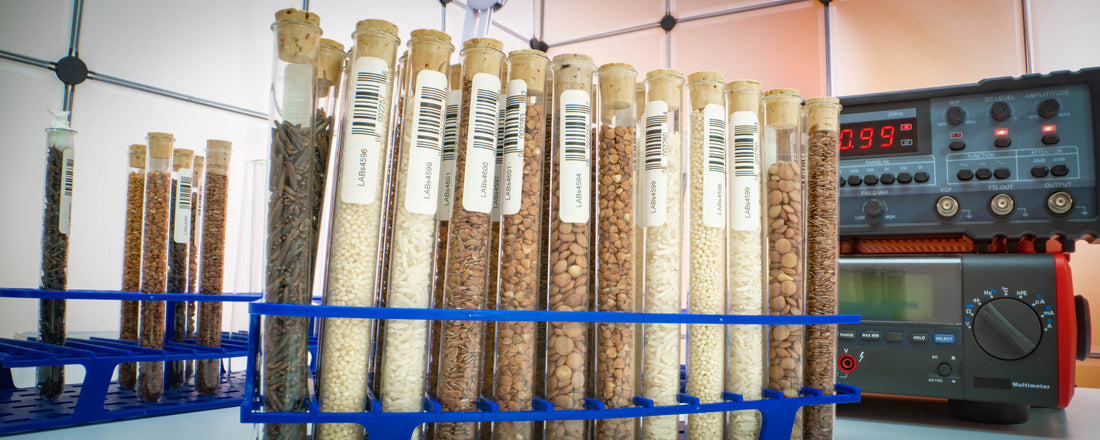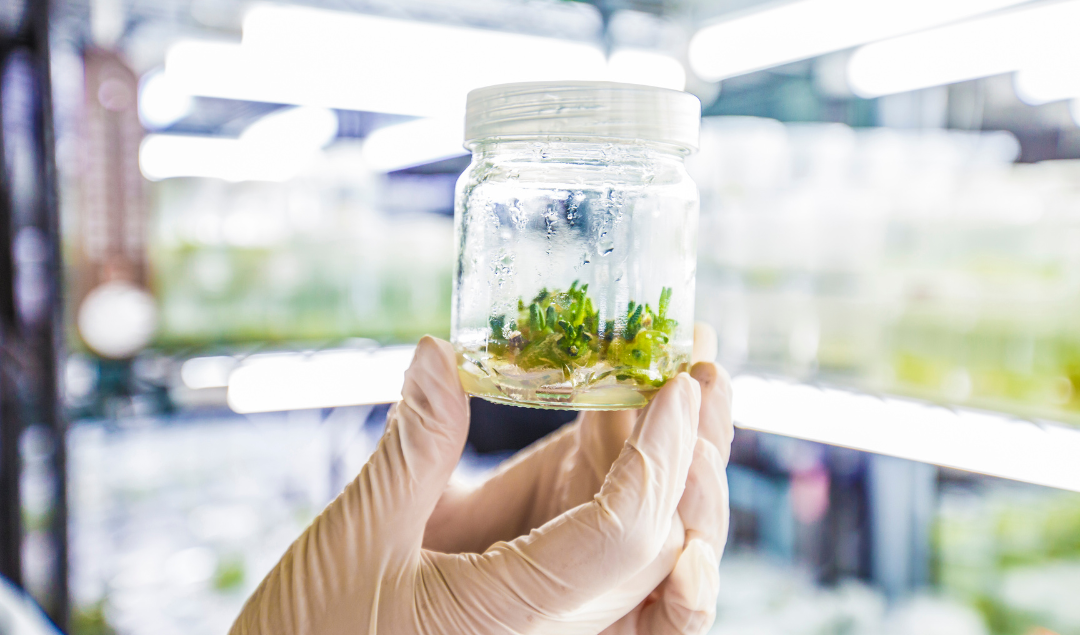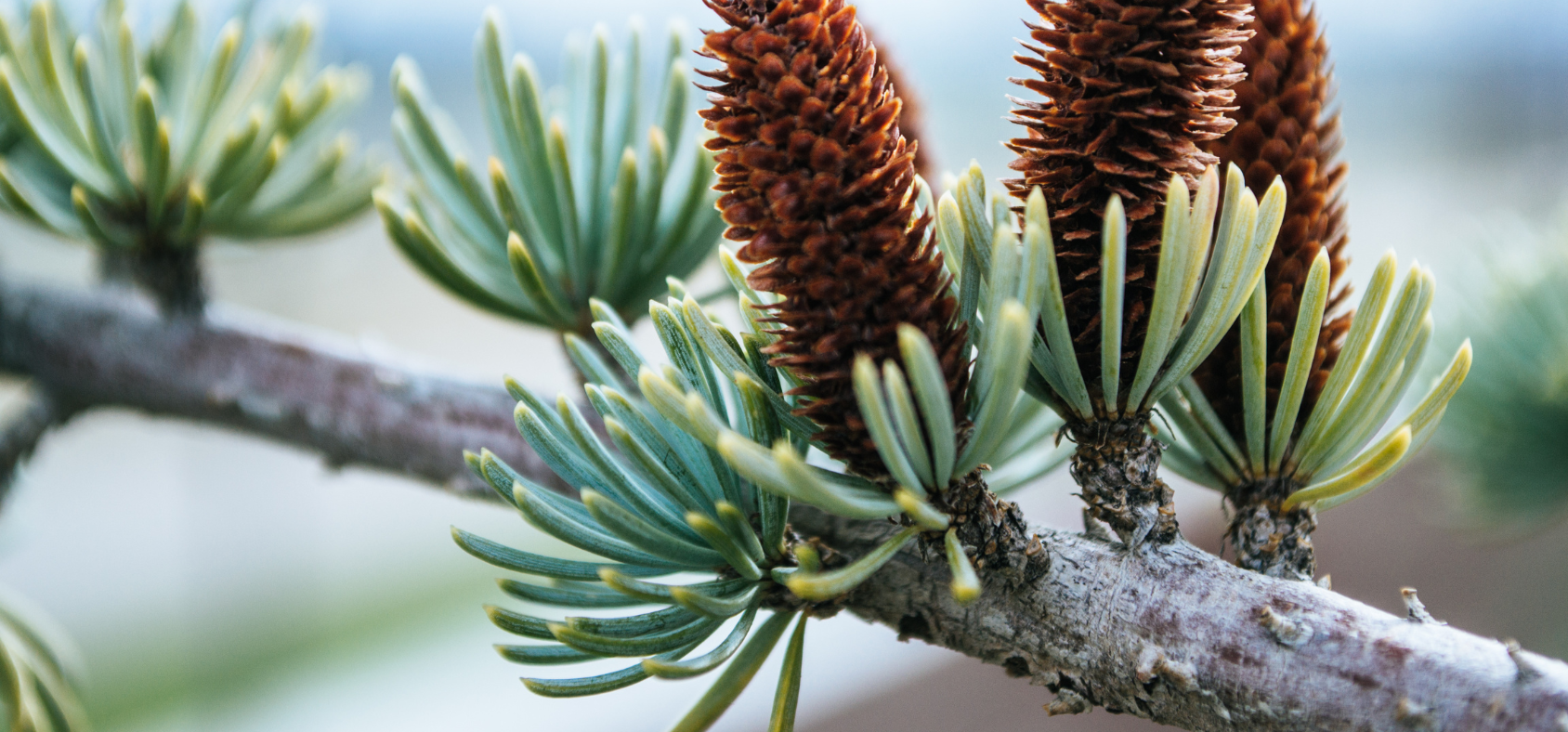
Ex-situ Conservation Techniques For Plants
As a content and community manager, I leverage my expertise in plant biotechnology, passion for tissue culture, and writing skills to create compelling articles, simplifying intricate scientific concepts, and address your inquiries. As a dedicated science communicator, I strive to spark curiosity and foster a love for science in my audience.


Plants are a vital part of the world’s biological diversity and an essential part of our life. We exploit them for our food, shelter, medicine, fuel, clothing, and whatnot. However, the loss of plants’ genetic resources has now been a major concern.
Introduction
Plants are a vital part of the world’s biological diversity and an essential part of our life. We exploit them for our food, shelter, medicine, fuel, clothing, and whatnot. However, the loss of plants’ genetic resources has now been a major concern.
Many plant species are either on the verge of extinction, endangered, or already extinct due to their overexploitation, climate change, habitat transformation, pollution, and invasive species introduction. Therefore, efficient conservation techniques are required to preserve the plants' genetic resources.
Currently, there are two available ways for the conservation of plants:
- In situ conservation: It’s preserving the plants in their own habitat, such as a natural biosphere reserve. However, the method is costly and cumbersome with regard to its size and maintenance aspects.
- Ex-situ conservation: It’s preserving plants out of their natural habitat, in an area that mimics the condition in which the play naturally live.
This article is focused on teaching you the methods of ex situ conservation and their advantages.
Conservation Techniques
Ex-situ conservation simply means off-site conservation. There are multiple ways included in this type of approach to conserve plants and preserve their genetics, such as gene banks, botanical gardens, and seed banks.
Gene Banks
The gene bank stores, maintains, and reproduces living samples of millions of crop varieties and their wild relatives around the world. Here, the genetic resources of the plants and crops are collected and stored in a way that they remain viable at the time of use. The technique ensures the security of food crops and their availability to farmers, breeders, and lab researchers whenever required.
One drawback of the technique is the reproduction-called regeneration of its plant material. It means after a certain period of time, the stored must should be re-grown and seeds should be harvested to protect the plant. Because, even in the best conservation condition, there’s a high chance of samples dying.
Also, all the samples should be properly characterized and documented and handed over to those requiring the sample. It’s an important tool for breeders and researchers looking to learn about the distribution of crops and their wild relatives.
Seeds Banks
Germplasm conservation using seeds is one of the most efficient and convenient ways of storing genetic resources. It requires a relatively smaller space compared to other techniques. It’s generally managed by the government and businesses.
However, there are two types of seed banks observed at a global level: community seeds banks and normal seeds banks (managed by the government).
The community seeds banks are informal management of seeds banks at the community level, which can be observed in many parts of the developing countries. The storage, treatment, and exchange of seeds from the last harvest is only limited to the local community and is managed at the small-scale community level with limited resources. A robust system is required to be developed for the exchange of seeds at a border community level.
However, despite its advantages, some limitations of the seed banks are:
- They can only maintain distinct clones of inbred and apomicts species and no other varieties.
- Over a period of time, the seeds lose viability and become susceptible to a pathogen or insect attacks.
- Inapplicable to vegetatively propagated crops, such as Dioscorea, Ipomoea, and potato.
The seed banks managed by governments are stored in specific conditions by following techniques developed by the organizations like Plant Genetic Resources Institute (IPGRI) and the Food and Agricultural Organisation of the United Nations (FAO). The technique minimizes generic erosion and allows the preservation of a large population. However, the genetic resource plants with low production of seed or having long-life cycles can not be preserved in seed banks.
Botanical Gardens
Botanical gardens have both, conservational and educational values. The facilities are created to provide housing and care for specimens with informing the public about the endangered species. It also educates people about the factors that threaten the existence of the species.
The purpose of doing so is to make people aware of the condition of the plants so that they take necessary actions to protect them and do everything from their side to promote the survival of the endangered species.
The method is mainly used to conserve wild, ornamental, rare, and endangered species. Some botanical gardens also have built facilities for the seed bank and tissue culture or in vitro propagation.
Advantages of Ex-situ Conservation Techniques
It’s best to apply an integrated approach by balancing in situ and ex situ conservation strategies for the protection of plant species. Both the approaches have their own advantages.
For example, in situ conservation allow the natural selection of plants and maintains viable and self-sustaining populations of wild species. However, habitat destruction is a threat to endangered species. For such cases, ex-situ conservation should be preferred. It allows scientists to understand the plants’ biology and their threat in order to implement an effective and efficient conservation strategy for the preservation of plant genetics. Moreover, it also allows the use of plants without damaging the natural populations.
Ex-situ conservation has several purposes, which include:
- Produce material for conservation biology research.
- The collection and storage of germplasm in various types of ex-situ facilities.
- Breed species whose seeds are recalcitrant and cannot be kept in a seed bank.
- Provide materials for conservation education and display.
- Protect threatened germplasm.
- Produce materials to assist with reintroduction, habitat restoration, reinforcement, and management.
- Supply a variety of materials in order to reduce or eliminate wild collecting pressure.
Other than ex-situ conservation techniques, tissue culture is also a way to conserve plant genetic resources or store germplasm by using plant tissues and culture, treating, and storing them in lab conditions. This is an efficient technique that allows the storage of germplasm for many years.
How Plant Cell Technology Is Helping Culturists Worldwide In Their Tissue Culture Application?
Plant Cell Technology is helping tissue culturists around the world by providing unique and world-class products and services that smoothen their process. It has MS media, agar, gellan gum, Plant Preservative Mixture (PPM), culture vessels, Biocoupler (TM), and masks in its store to facilitate your processes.
And, that’s not it! Plant Cell Technology also offers consultation services to culturists of all sizes that help to get instant solutions to your tissue culture problems.
So, visit plantcelltechnology.com today and find out more about our product and services and how they help you to excel in your tissue culture processes.
Happy Culturing!!
Blog Categories
View by Level
Popular Blogs

Media pH: Why It Matters More Than You Think in Plant Tissue Culture
Introduction Plant tissue culture is a cornerstone technique in modern plant biotechnology, enabling the propagation of plants under sterile and...
Read More
Can We Grow Wood in a Lab? The Future of Tissue Culture in Forestry
Introduction Wood has long been a cornerstone of human civilization—used for shelter, tools, paper, energy, and countless everyday items. However,...
Read MoreSubscribe to Our Newsletter







Join the conversation
Your email address will not be published. Required fields are marked